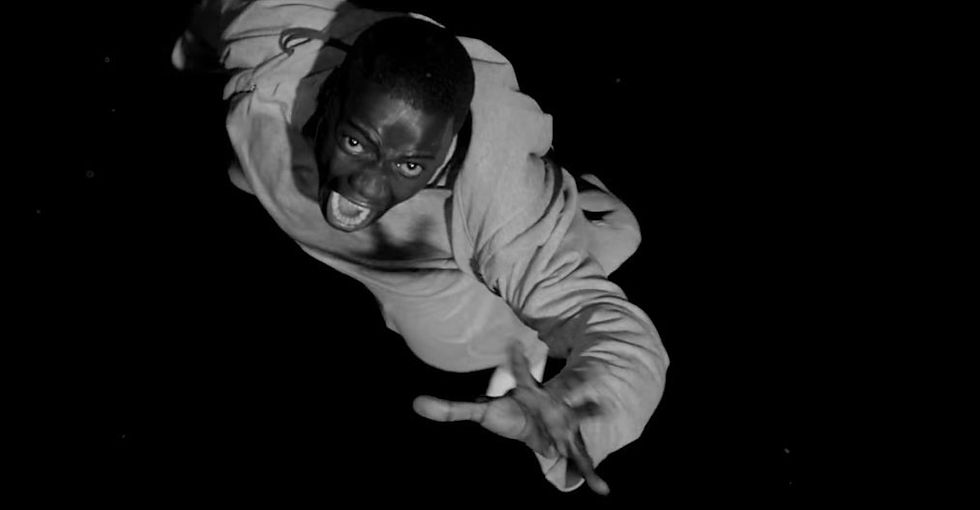WHAT IS A SCREENWRITER'S VOICE AND HOW DO YOU FIND YOURS?
- DOUGLAS J. EBOCH
- Feb 11, 2018
- 4 min read
(SPOILERS: Get Out, The Big Sick)

If you ask producers and development executives what they’re looking for in new writers, among the top answers will be, “Someone with a distinctive voice.” But what do they really mean by the term “voice”? A writer’s voice is a combination of style, thematic content, and point of view. It is part of a writer’s brand, which also includes things like the genre and format they are known for. For some writers, the style part of their voice is readily apparent. You can tell the difference between scripts by Quentin Tarantino, Nancy Myers, Shane Black, Aaron Sorkin, Woody Allen, and Judd Apatow by such stylistic elements as the way they use dialogue, humor, and visual spectacle. But not all screenwriters have such distinctive styles. Writers like Stephen Gagan, J.J. Abrams, Cameron Crowe, Jordan Peele, Lawrence Kasdan, and Aline Brosh McKenna have a more craft-oriented style, but their films are still distinctive based on the kinds of subjects they write about. Their voice is defined by the thematic and story elements that recur in their work. The one thing that makes all of these people in-demand writers in Hollywood is that they have something to say. They have a voice that is unlike any other writer. This is what the industry is looking for in new writers. They have plenty of accomplished craftspeople they can hire – people with experience, people they can trust to do a good job. If they are going to hire an untested newcomer, that person needs to be able to bring a perspective nobody else can. And that’s why your work needs to have a voice. So how do you find and develop your voice as a writer? The first thing is to ask, what kind of stories do you really want to tell? The things you are passionate about come from who you are. This can be as deep as Aaron Sorkin’s repeated exploration of the ethics (or lack thereof) in powerful, hyper-intelligent men; or as surface as Quentin Tarantino’s obvious passion for pulp, pop culture, and poetic dialogue. It’s not even necessary that you are conscious of these passions, as long as you are telling a story that you love. When you write from the heart, you can’t help but reveal your perspective on the world. Sometimes following your passion can be tough, though, because new writers are constantly told to be “commercial.” And that’s good advice. But if you simply mimic the latest hits, how will your voice come through? Screenwriter Paul Guay (Liar, Liar) has a Venn diagram he uses to select material. The three circles of the diagram are: What do you love? What are you good at? What can you sell? Paul’s ultimate point is that you should only write things that fall in the intersection of those three circles. The first two circles will be a big part of what makes up your voice. The goal is to find the part of your voice that is also commercial. The good news is that with a gazillion cable channels and streaming services, you can find a buyer for almost anything these days. However, you can’t make a big budget feature film out of almost anything. If you find that your voice is leading you to more niche material, you will have to figure out what outlet might program to that niche and be aware of the budget realities of servicing that niche. The second thing to do in order to develop your voice is to examine what is unique about your life experience. What do you know about that most writers don’t? Do you come from a cultural background seldom represented on screen? Have you held a job in an interesting industry? What was your family life like? Have you had unusual relationships? What is the most exciting thing that’s happened to you? The scariest? The saddest? Bring these experiences to your work. The Big Sick was one of the most successful and well-reviewed movies of the year. It is in many ways a fairly commercial, high-concept romantic comedy: a commitment-phobic man realizes he’s in love with the woman he’s dating when an illness puts her in a coma. But it is based on screenwriters Emily V. Gordon & Kumail Nanjiani’s actual relationship. Beyond just getting a story idea from real life, Nanjiani’s experiences as an Indian-American from a traditional family adds a subplot that doesn’t feel like it could come from any other writer. Your work doesn’t have to be autobiographical to reflect your life experience. I don’t imagine Jordan Peele was ever kidnapped and hypnotized as part of a plot to have his brain replaced like in his movie Get Out. But you can feel his experiences as a Black man living in white society informing every scene. You can also see reflections of George Lucas’ life growing up as a drag racer in Modesto dreaming of a bigger life in the character of Luke Skywalker in Star Wars. This indicates one of the best ways to let your voice come through: put your feelings and experiences into your characters. Of course it’s easier to incorporate your life experience into your work when you actually have some life experience. When it comes to art, you have to have something to say before you can have a voice.


































